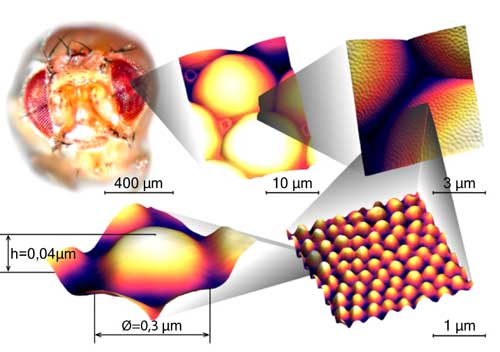Nanowerk September 16, 2020
Insect eyes have an anti-reflective coating which has been shown to provide anti-adhesive functionality. Researchers in Switzerland demonstrated a clear link between the morphology and function of the nanocoatings on Drosophila corneas. They found that nanocoatings that consist of individual protrusions have better anti-reflective properties, whereas partially merged structures have better anti-adhesion properties. Using biochemical analysis and genetic modification techniques they reverse engineered the protein Retinin and corneal waxes as the building blocks of the nanostructures and established low-cost production of Retinin. Mixing this synthetic protein with waxes they forward engineered various artificial nanocoatings with insect-like morphology and anti-adhesive or anti-reflective function. The combined reverse- and forward-engineering approach provides a way to economically produce functional nanostructured coatings from biodegradable materials…read more. TECHNICAL ARTICLE

Successive enlargements of a fly’s eye which are themselves covered by a thin layer of protuberances a few tens of nanometres high. 1 micrometer (um) = 1000 nanometers (nm). Credit: Vladimir Katanaev